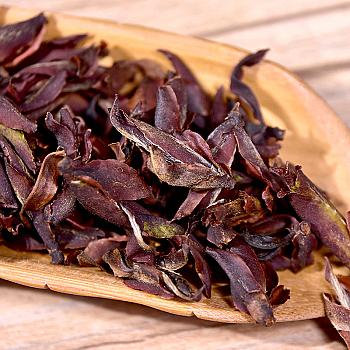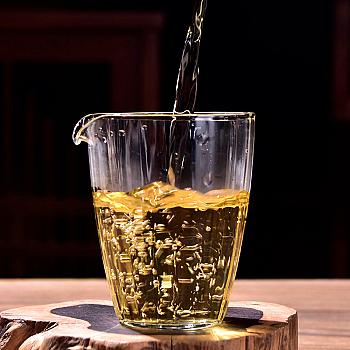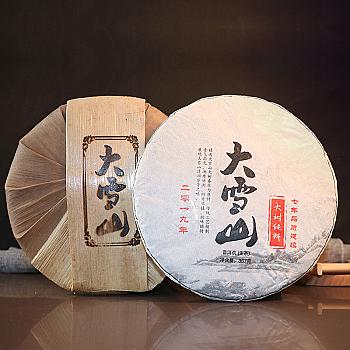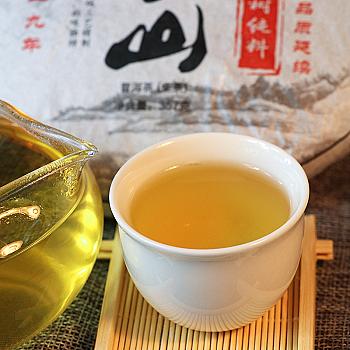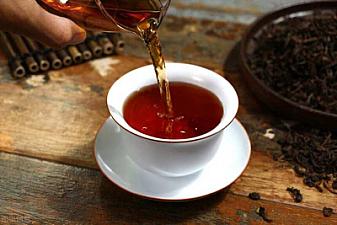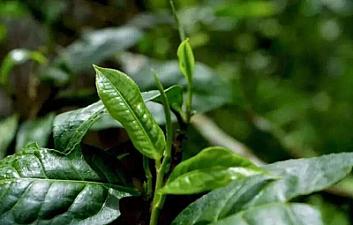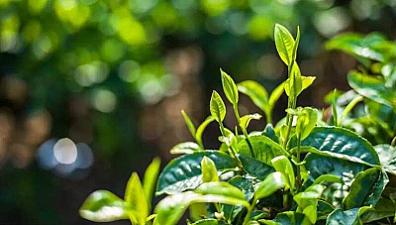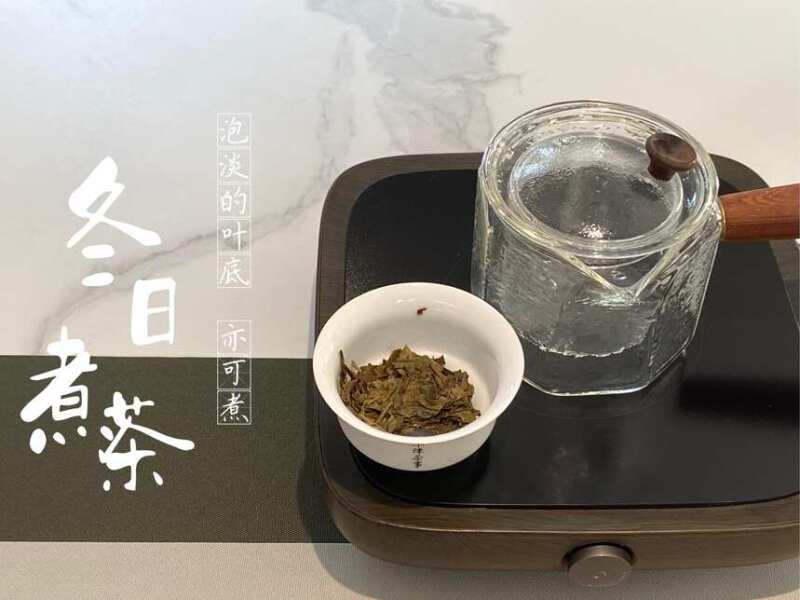
The pictures speak for themselves! The complete tutorial on how to make old white tea, only 1 step, even beginners can understand.
August 14, 2025
It's quite a nice experience to boil water at home when the temperature drops. On WeChat, I saw someone share their experiences boiling tea recently. They've tried brewing both white tea and Pu'er.

Chapter 1
At that time it was winter and year-end.
A new cold wave is rolling in from the north.
A good experience is brewing tea at home when it cools down.
I saw a friend sharing their experience of boiling tea on WeChat today.
"I've been brewing tea a lot lately, I've tried white tea and pu-erh, but haven't tried to brew red tea or yancha yet. After brewing one pot of tea, the whole room is filled with the rich aroma of tea, it feels really good."
"Compared with making tea in a teapot, boiling water is more convenient and can thoroughly extract the soluble substances from the tea leaves, and the taste of the brewed tea is sweet, smooth, refreshing, soft and silky."
"The method of brewing tea is simple, you don't need to brew it one by one, one pot can be drunk for a long time. In addition, brewing tea is economical in terms of tea leaves. It's 5 or 6 times the amount used when normally making tea, as long as not deliberately slow cooking, the tea will not worry about being too thick..."

This conversation is worthwhile indeed.
Some teas are not recommended for brewing by immersion but are suited to being boiled because of their different water-to-tea ratios.
Unlike hot-brewing tea, cold-brewing involves steeping coarse tea grounds in water for an extended period of time. This method involves steeping coarse tea leaves or powders in a large amount of cold water, which results in a smoother flavor and lower caffeine content than traditional hot-brewed tea.
However, brewing tea seems simple, but there are quite a few details involved.
Knowing is not difficult, but carrying it out is difficult.
Mainly made with old white tea, the entire process of brewing tea is a long story.

Volume 2
One, selecting tea.
In winter boil white tea, old white tea is a welcome guest for numerous tea friends.
New tea from that year still had a fresh scent of tea leaves and wasn't suitable for brewing.
Old white tea after more than three years of storage, tea taste soft, sweet and mellow flavor, broth is tender.
Therefore, when drinking old white tea, it is advisable to brew and cook two ways.
Boiled Long White Tea, most tea lovers are fond of boiled Long Shou Mei.
Loose branches of autumn eyebrows tea spread out, the compressed tea after decades of old, it is easy to appear sweet and mellow dates fragrance.

After brewing tea, there's still a way to unlock deep inner flavor.
The tea has a delicate flavor and a rich texture. It's perfect as a winter staple, also fitting for the season.
Of course, in addition to tea cakes, loose tea is still suitable for cooking.
In addition to Laoshou Mei, you may store old Bai Mao Gen, white peony etc., but it is not a problem if they are cooked.
However, due to the limited quantity and high value of the old silver needles.
To make use of tea flavors rationally, one can brew tea with a lid on the bowl and wait until five to six infusions before removing the tea leaves.

Chapter 3
2, selectors.
Boiling tea is a basic setup of brewing kettle + teapot.
This winter, the internet celebrity craze of sitting around a furnace and brewing tea has been extremely popular.
However, for modern living, using a charcoal stove to boil tea is complex and slow in heating efficiency, compared with using an electric ceramic pot.

The tea kettles on the market are numerous and varied, including iron pots, clay pots, glass pots, purple sand pots, etc.
Considering practicality for the masses, heat-resistant glass containers are a first choice.
The glass teapot is affordable, easy to observe the color of tea and has a versatile style, making it an ideal choice for newbies trying out cooking tea.
For old tea lovers, trying various clay teapots and teacups, comparing and experimenting slowly is also interesting.
Beyond teapots and kettles, things like tea sets, small tea cups, thermal mats, tea timers, scales - you don't have to be too fussy about them.
Choose on demand, with plenty to spare.

Volume 4
Three, prepare tea.
Do everything beforehand and be prepared, then things will go smoothly; if not, they will go wrong. Even brewing tea is like that.
Before brewing tea, prepare the necessary tea leaves in advance.
Waiting for a pot of water to boil before busily fetching tea, splitting buns, and adding tea will result in mistakes happening.
The amount of tea to be used is determined by the situation of brewing tea.
Boil down the lees: just turn the leaves that are left in the bowl into the bottom and you can use it.
Boil dried tea leaves in water of about 400 milliliters. Two to three grams of tea leaves are enough, too many will boil the tea into a concentrate.

Before brewing tea, find a piece of old tea.
Unpacking tea, breaking into slices and weighing with a balance scale.
Put the ready loose tea in a tea caddy for storage.
The weighing is done, and the tea cake is sealed in its original state immediately to prevent moisture from causing it to lose air.
Tea aroma is rich and mellow, tea taste is sweet and smooth, there's no strange or miscellaneous flavor, unlike aged white tea that has quality anomalies. No need to soak, rinse or moisturize the tea before brewing.
Simply boil and drink. No harm.
On the other hand, old white tea with sour taste, muggy smell, starchy smell and miscellaneous smell can't rely on washing tea and airing to improve.
Better not drink it from the beginning if it's been spoiled or rotten!

Issue 5
Four, select water.
About 99% of a cup of tea is water.
Soluble in water are various tea flavor substances, including polyphenols, catechins, caffeine, etc., in units of micrograms.
It is easy to see that water quality affects tea flavor when we compare two of them.

To brew good tea, you need to use good water.
Boiling good tea is also boiling the right water.
While boiled or heated water is still potable.
But when brewing tea, tap water is still best avoided if you want a better taste experience.
Boiling tea with mountain spring water makes the tea soup sweeter.
Ordering bottled purified water to brew tea can better present a cup of good tea's full flavor.

Number 6 (Volume 1)
Five, tea-brewing order.
In the tea world, whether it's with a teapot or using a teacup, the default is to add tea leaves first and then water.
Making tea in a glass cup requires complicated procedures such as the top pouring (poured water first then tea), middle pouring (water poured halfway, then tea, and finally filled with water) and bottom pouring (tea poured first, then water).
Of course, it is still more common in daily life.
Loose tea has a lighter volume and is easily buoyant on the surface of the water, not beneficial for releasing the tea flavor within a short period.
First pour tea leaves into a container and then add water evenly to make them get wet thoroughly, which can fully unlock the flavor of the tea.
There are two types of way to throw tea leaves: in succession and together.
One is cold water immersion of tea, similar to braising pork with cold water into the pot.
One is hot water pouring tea, boiling water before brewing a pot of clear water, water boils and bubbles, then pour in the tea leaves.
Cold-boiling and hot-boiling each have their advantages.

The tea leaves themselves are consumed in huge amounts; ordinary everyday tea with general quality itself; a very small amount of tea is poured, only one or two grams of dry tea is put in to boil......
In order to prevent a light tea flavor from boiling water, it is better to use cold water for brewing tea.
As water temperature rises, there is a continuous release of its own tea flavor that can also brew a relatively full-bodied taste.
Conversely, dry high-altitude old white tea is best cooked with boiling water.
When bubbles appear on the surface of the water, open the lid (be careful not to scald) and add previously prepared dry tea.
Once boiled with tea and soup, turn off heat, pour out for drinking.
It can save a bit of power and is effective after boiling a pot.
Pouring hot water again, the same tea is not bad!

Episode 7
Six, brewing time.
There is no fixed time limit for brewing a pot of tea because there are so many variables.
For example, heating method.
Coal furnace, electric kiln, alcohol burner, gas stove, heating rate is different under various heat sources.
For example, temperature is high or low.
It's different with high heat, medium heat or slow cooking.

For example, how much water.
Boil 400ml, 600ml or just boil 1L of water?
For example, tea quality.
Good tea rich in inherent tea flavor does not require long boiling.
Like a sponge squeezed full of water, it will squirt out when you press on it gently.
On the other hand, internal accumulation is insufficient and can't be avoided by boiling for a long time with violence in order to avoid weak or tasteless tea flavor.
In general, whether it's cold water or hot water, a pot of tea can be turned off once it rolls violently and bubbles.
Boil the water first and do not need to transfer it to low heat for slow stewing; otherwise, the tea flavor will be boiled too thick and heavy!

Chapter 8
Seven, whether to leave bottom soup.
Boil a pot of tea and pour it out for drinking, but don't pour all of it out.
Instead leave a little bottom broth for cooking again next time.
This method is called leefu (also spelled leafu) or leemutang.
Brewing a second pot of tea using the same leaves will result in a bitter and unbalanced flavor profile. To avoid this, it's recommended to brew the leaves at least twice, or re-steep them once after brewing.
The previous pot of tea was rich in flavor and delicious, but the next pot tasted very bland after just one sip.

But there are also some people in the circle who oppose leftover noodles.
There's no need to boil repeatedly the boiled water for making tea.
Boil some tea and drink it, boil one pot of tea is enough, don't need to boil again and again.
Actually, whether you boil off all the broth or leave it is not absolutely limited.
If you want to stay, then stay.
Finish it quickly if you don't drink it up.
It is not unreasonable that we continue to add hot water to the unfinishable tea after it cools down completely in order not to waste anything.
If the amount of tea used is not much, there are limited tea solids and only enough for a single brew, then it doesn't make sense to leave a bottom layer.
Steaming hot tea, best enjoyed immediately! Drinking it right away allows you to fully experience its delicious flavors!

Chapter 9
With winter arriving, many tea drinkers are excited about brewing tea, and there's a reality behind it.
In winter, the temperature is low and if the hot tea water isn't drunk promptly it will get completely cold in a moment.
When you watered your potted plants, looked through two pages of a book, and thought about taking a sip of tea.
Uh-oh! The tea has cooled down!
The person has not arrived yet, and the tea is already cold.
Cold tea water is hard to get people interested in drinking tea.
Now's the time for a pot of old tea that's still bubbling over.
After the tea is boiled, it should be left on the stove for warming up.
You can drink and get hot tea at any time.
Drinking hot tea in winter is a great pleasure.
